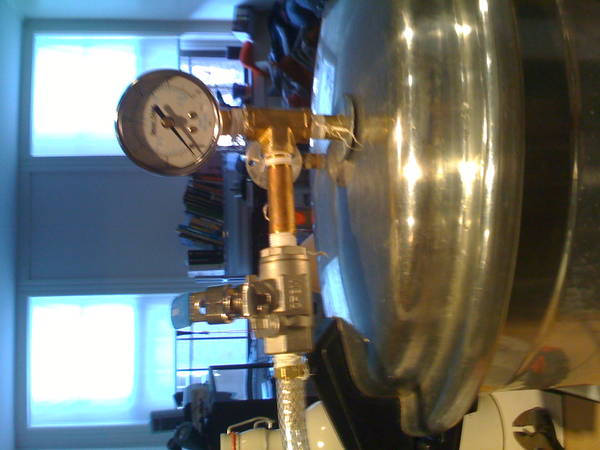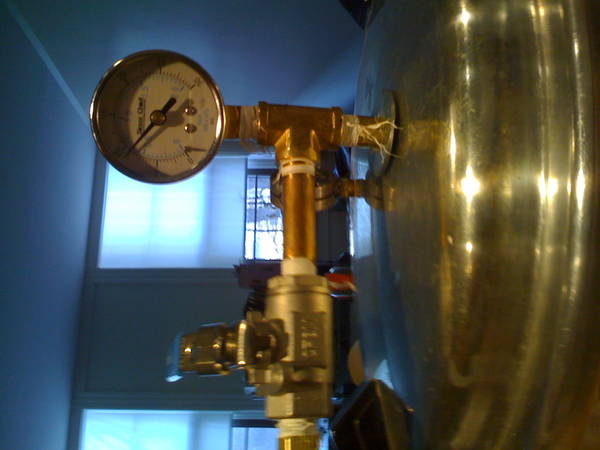FlyGuy
Well-Known Member
I'll just chime in with my opinion. My experience with my system tells me that even a small pot generates plenty of heat for a 5 gal batch. I use just a 5.5 L pressure cooker, and I have no trouble stepping through my rest temperatures. A 122 protein rest to 154 saccharification rest only takes 10 - 12 mins. I really don't think you want to raise your mash temp more quickly than that, even if you have a motorized stirrer or you are using a recirculating pump (actually, I have built and used the latter -- I am not using a March pump to recirculate wort out of the bottom of the mash tun up to the top to avoid stirring -- works fine, and one of these days I will do a write up on this system. I call it a SIRMS system -- Steam Injected Recirculating Mash System).
Anyways, my system was not limited by the pot size or temperature/pressure of the water, but rather the capacity of my stove element to deliver heat. A larger pot/volume of water will give you a longer initial temperature boost, but the remainder depends on how much heat energy you can deliver to the pot to keep the temp/pressure up. I have considered using a small gas burner to increase the speed of heating the mash, but eventually decided against it because I don't want to raise the mash temp too quickly. With a steam system, there is no scorching involved, but rather, heat shock to the enzymes could be a real concern.
Anyways, my system was not limited by the pot size or temperature/pressure of the water, but rather the capacity of my stove element to deliver heat. A larger pot/volume of water will give you a longer initial temperature boost, but the remainder depends on how much heat energy you can deliver to the pot to keep the temp/pressure up. I have considered using a small gas burner to increase the speed of heating the mash, but eventually decided against it because I don't want to raise the mash temp too quickly. With a steam system, there is no scorching involved, but rather, heat shock to the enzymes could be a real concern.





